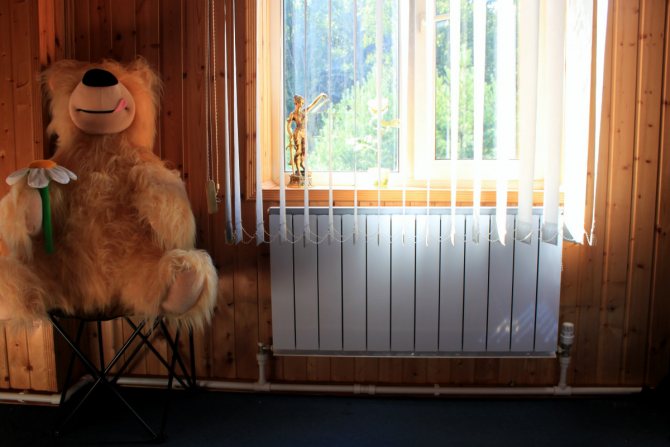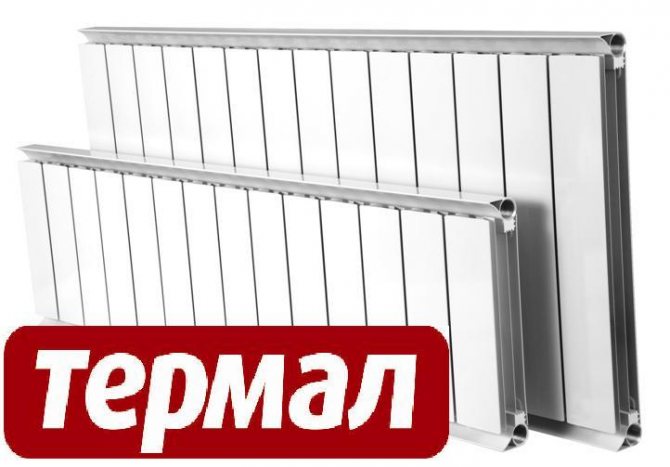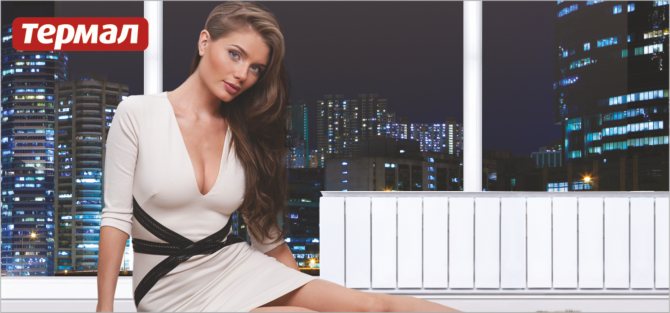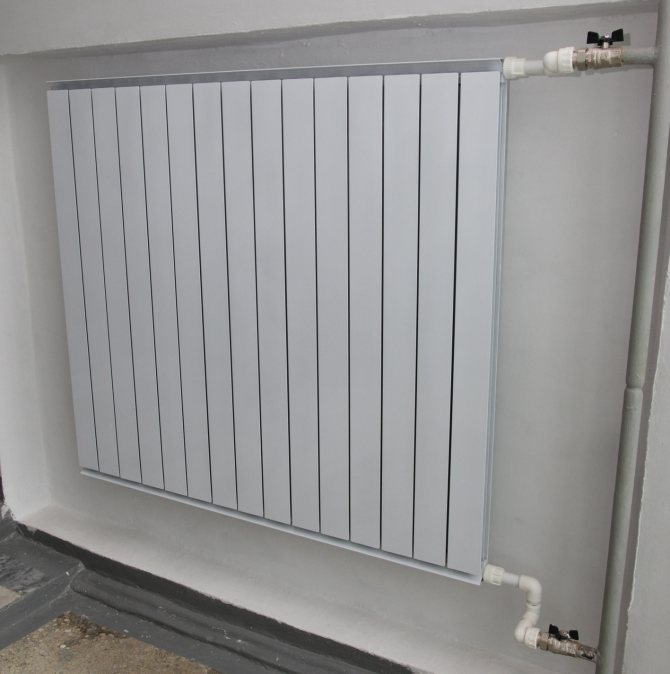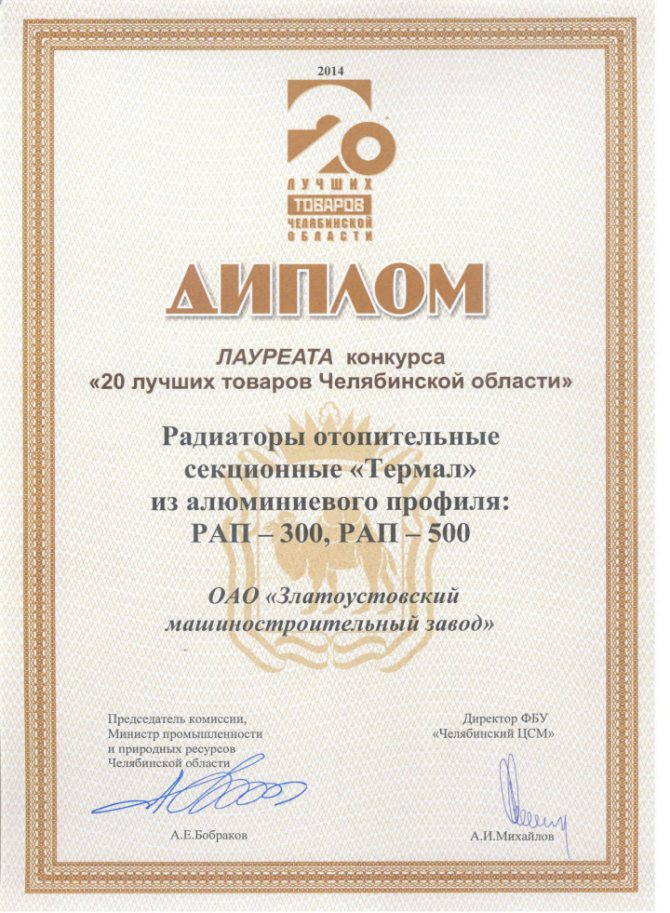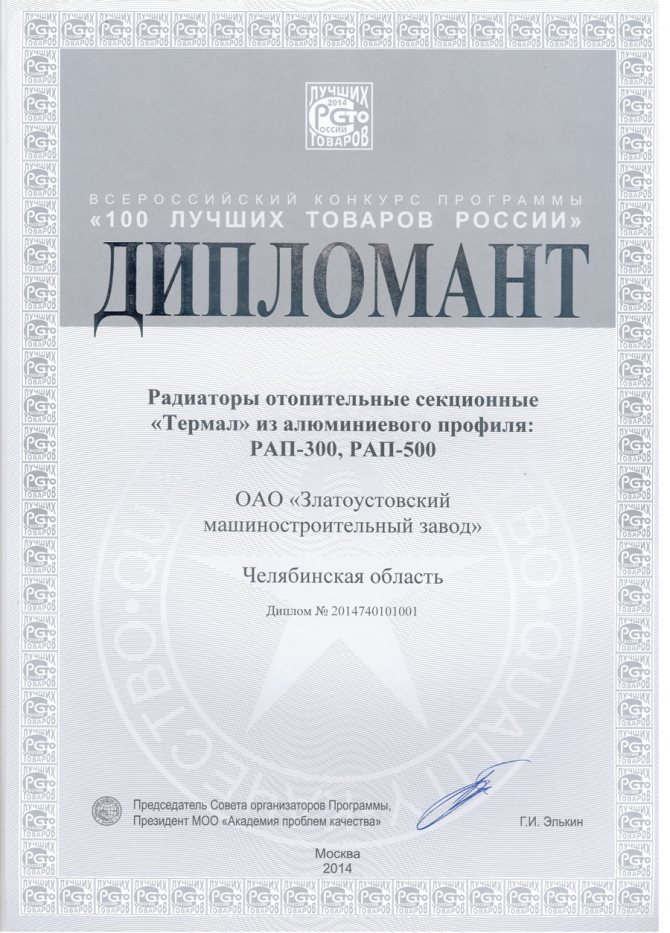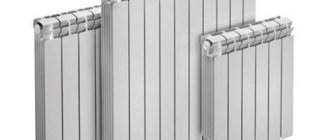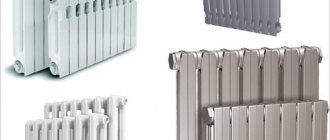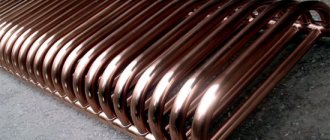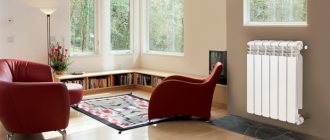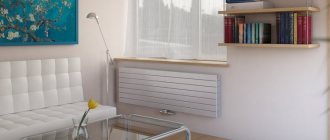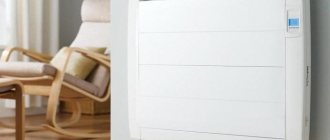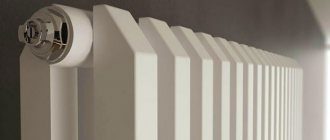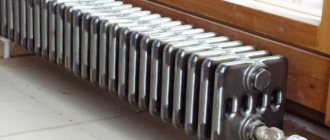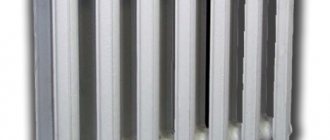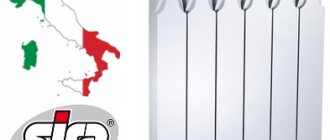During a major overhaul, most owners of apartments or country houses think about replacing heating radiators. Previously, in almost all houses, cast iron batteries were installed, which were heavy and did not differ in external presentability. At the moment, technologies are developing, it became possible to produce high-quality products for heating from aluminum.
Such products fit perfectly into the interior due to their attractive design, while they are characterized by increased heat transfer, providing reliable heating of the home. On the Russian market there is a wide range of aluminum radiators "Thermal", which can be matched to any type of heating system.
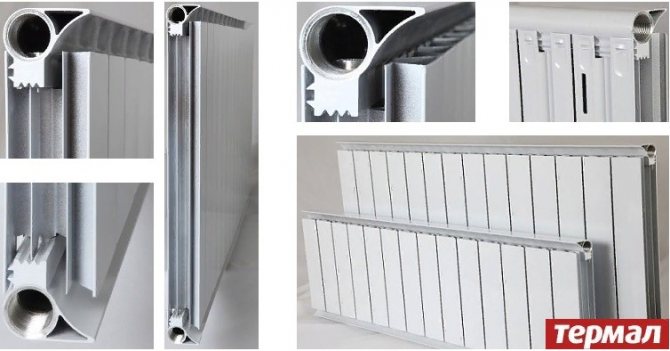
Features of "Thermal" radiators
The production of batteries of this company is carried out by JSC "Zlatoust Machine Building Plant". The key advantage of heating products is that they are developed taking into account the operation on the territory of Russia.
Production technology
For the manufacture of batteries, a corrosion-resistant aluminum alloy AD 31 is used. Produced by extrusion. Separately form vertical columns and horizontal collectors. In the columns, the latches are squeezed out by stamping, which are connected to the grooves in the collectors. This type of lock provides high strength characteristics.
Double rubber sealing rings are responsible for reliable tightness. Two grooves are machined near each vertical channel located in the horizontal manifold. O-rings made of heat-resistant rubber are placed in them.
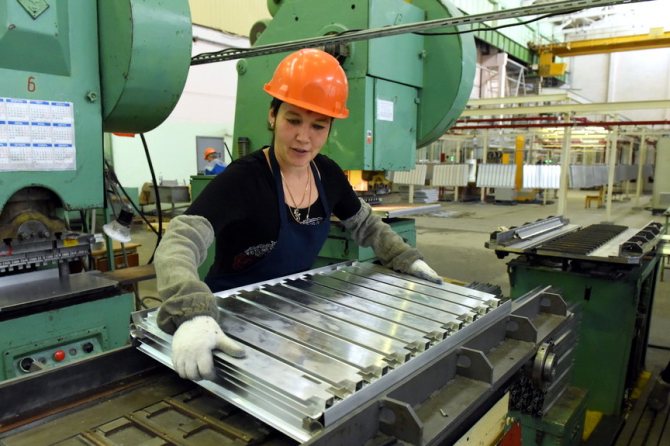

The next stage of the assembly is the molding of the radiators into one unit by means of a press. This makes the products non-separable, that is, they cannot be repacked. They are delivered ready-made straight from the factory. It only remains to install them correctly.
For the outer coating of heating devices, powder paint is used. This stage of production is carried out in an electrostatic field. The advantage of this technology is that the resulting coating is highly resistant to mechanical stress. In addition, a special pigment is added to the base paint, which protects the coating from discoloration during operation or under the influence of ultraviolet rays.
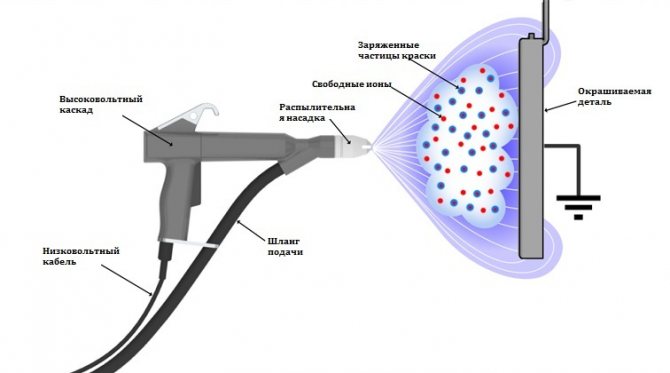

Benefits
Termal radiators are often installed in Russian heating systems. Due to their performance characteristics, they confidently occupy a leading position.
Let's highlight the main advantages of the product:
- Compactness. The thickness of the devices is no more than 5 cm. This makes it possible to install them not only on open walls, but also under narrow window sills.
- Guarantee. The warranty period is 5 years.
- Compatibility. During installation, batteries can be connected to communications made of various materials, such as plastic or steel.
- Installation. The installation process is straightforward, and it will be even easier due to the unified thread of the elbows.
- Corrosion resistant. Compared to cast products, high-quality aluminum products can last longer without getting rusty.
- Aesthetics. Products are coated with powder paint. The original appearance of the products will be maintained for a long time.
- Smoothness of channels. Thermal batteries have no technological “pockets” where sludge deposits could accumulate.
- Good level of thermodynamics. Thanks to this, it is allowed to embed any heat-regulating devices into the structure.Due to the "small capacity" of the devices, expenses on the coolant are saved.
- Adaptation to Russian realities. Radiators successfully show themselves in domestic central heating systems, where the acidity of the coolant (pH) varies from 8.3 to 9.5.
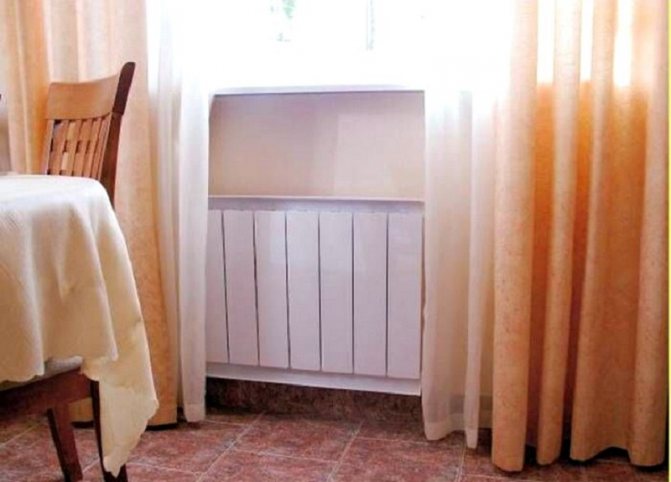

disadvantages
Aluminum heaters have certain negative qualities, due to the characteristics of the material used.
There are such disadvantages:
- Ventilation. The system is constantly undergoing chemical processes that cause the formation of air. It needs to be played off from time to time.
- Threaded connections. They are considered to be the weakest points of the instruments. If a water hammer occurs, there is a possibility that the tightness will be broken in these places.
By and large, these are not too serious disadvantages. In addition, the manufacturer takes into account all the operational features when modernizing its own products.
Specifications
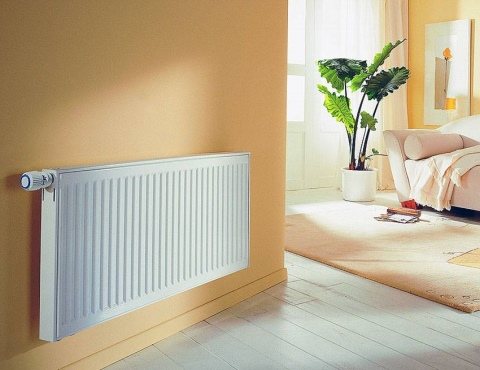

Steel radiators Thermal
Heating batteries of the brand are made of corrosion-resistant aluminum alloy AD 31 using extrusion technology. Separately for them, columns of the vertical type and horizontal collectors are made, special latches are made in the columns, which interlock with the grooves inside the collectors. Due to this production technology, Termal radiators are distinguished by a high level of durability.
For tightness, each battery is supplemented with double rubber sealed rings. Two grooves are formed around all vertical channels, where heat-resistant rubber rings are placed. After assembly, the radiators are formed into one unit, all of them are non-separable and are delivered from the factory ready-made. For installation, just hang the battery on special brackets or hooks.
Each radiator is painted using a powder coating technique, which allows the paint to be resistant to various damages. A pigment is added to the base paint to prevent rust formation.
What is the difference from foreign counterparts
If you compare Thermal batteries with similar aluminum products, you can find many differences.
Products differ in several ways:
- Coloring. A pigment of increased whiteness is additionally added to the powder coating of Thermal radiators. As a result, the color of the radiator is glossy and resistant to mechanical damage. Many traditional models, on the contrary, are covered only with milky paint, which fades over time, acquiring a yellowish tint.
- Strength. The devices are not inferior in this indicator to bimetal products or convectors. Thanks to their rational design and modern alloys, the batteries successfully withstand 12 MPa (120 atmospheres) water hammer. Analog products are usually made from silumin, which is not as strong.
- Material. The basis for the Termal radiator sections is hardened extruded profiles. The process of their manufacture is carried out using a press with a pressure of 2000 tons. This method makes it possible to produce mirror-clean external and internal surfaces of radiators with a uniform structure and increased strength. Similar products are made from silumin alloys. Complex castings can be made of them, but this material has micropores, which makes the product more fragile.
- Life time. Pressed products can serve for about 20 years, which is confirmed by field tests in accordance with the ABOK standard, clause 5.1.9.
- Design. "Thermal" produces monolithic batteries with the number of sections from 3 to 16 units.
- Thickness. This indicator for devices is only 52 mm. As a result, the overall weight of the product is reduced, which makes installation work easier. As for imported analogs, they are 1.5–2 times thicker and for their installation it is necessary to comply with certain requirements.
- Quality control. Thermal radiators are necessarily tested with a pressure of 36 atmospheres, after which a special stamp is put on them. Thanks to modern technologies, every stage of production is strictly monitored. ISO certification only increases customer confidence in the company. Imported products often lack factory documentation, so it is difficult to judge the quality of such products.
- Hydrogen exponent pH. Batteries of the Russian manufacturer can operate in a working environment with pH = 10. In centralized heating systems, this indicator varies from 8.3 to 9. For imported heating devices, the alkaline value threshold is set at no more than 8.
- Tightness. Thermal products are characterized by a modern two-level sealing system. Along with the use of rubber O-rings, the fittings are also pressed in. During operation, such a structure is covered with silt, which further increases the tightness. Similar imported appliances use flat gaskets, which are considered less reliable.
From this we can conclude that domestic batteries are ideal for central heating systems.
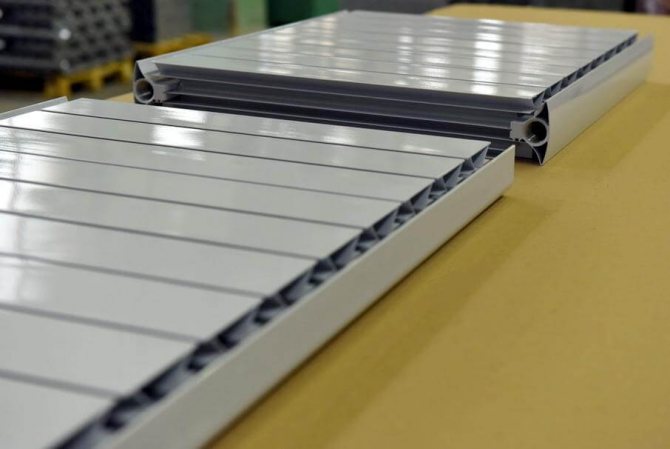

Prices for the Thermal range of radiators
thermal radiators
About products
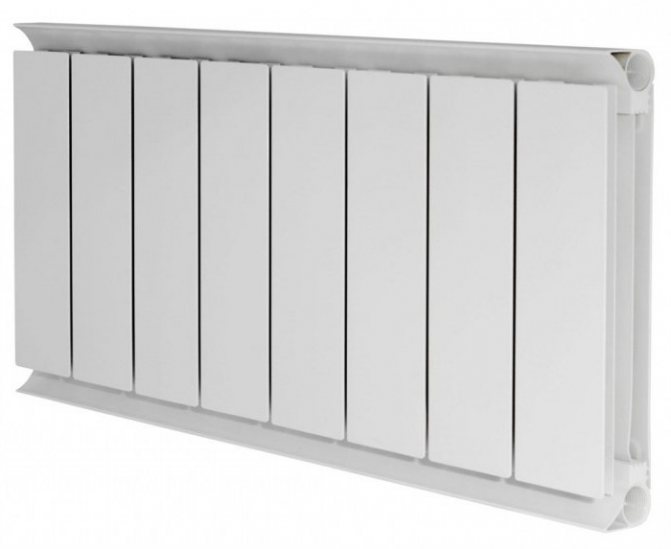

This equipment is manufactured within the walls of the Zlatoust Machine-Building Plant, which is located in the Chelyabinsk Region. These devices were developed taking into account the peculiarities of the operation of local autonomous heating and centralized systems. These units can be used to heat not only high-rise, but also low-rise buildings for various purposes. Industrial buildings are also efficiently heated with these radiators. Reliability, affordable prices, practicality and high efficiency make the Thermal radiators attractive to the Russian consumer.
Overview of models and their cost
At the moment, the manufacturer produces 2 models: "RAP 300" and "RAP 500", which differ in technical characteristics.
"RAP 300"
The exact height of these devices is 331 mm. The minimum number of sections is 3, and the maximum is 16.
Characteristics:
- withstanding pressure - 24 atm. (short-term allowed 35 atm.);
- coolant temperature - no more than +105 ° C (briefly withstand up to +135 ° C);
- section length - 80 mm;
- power - 0.114 kW;
- section capacity - 0.08 l;
- center distance - 300 mm;
- depth - 52 mm;
- section weight - 0.7 kg.
Thanks to these characteristics, the devices are successfully installed in apartment buildings. Both vertical and horizontal wiring is allowed. There are no pressure restrictions for individual heating, since the indicator rarely exceeds 2-3 bar.
"Thermal 300" is 1.5 times less powerful battery than the 500 model. Its average cost per section reaches 322 rubles.
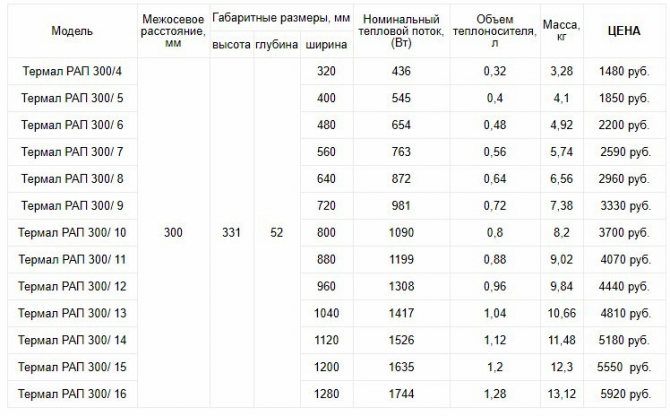

"RAP 500"
The service life of this model reaches 20 years.
Specifications:
- section power - 0.161 kW;
- center distance - 500 mm;
- section volume - 0.12 liters;
- height - 531 mm;
- depth - 52 mm;
- length - 80 mm;
- section weight - 0.97 kg.
The performance characteristics of domestic batteries "Thermal" are at the level of the best world standards. The average market price for one section is from 350 rubles.
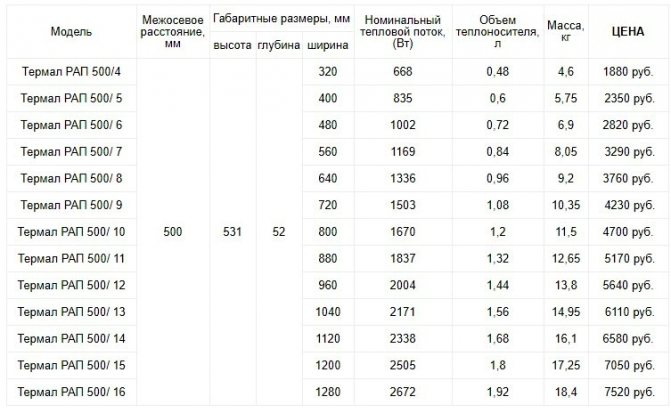

Thermal radiators reviews of buyers, pros and cons, advantages and disadvantages
Sectional aluminum radiator Thermal Standard Plus 300 reviews
Yaroslav Ch. ★★★★ Advantages:
Nice radiator with 75mm depth. thick aluminum hard ribs. on one of the 6 radiators it was not painted in the back. 10 mm in size. x 10 mm
Comment:
Need a radiator installed and forgotten, or a lot of radiators is the best option. Chinese foil bending by hand for the same amount (in leruya) loses a lot. I liked it. put in a country house 6t pieces. different ribbing Buy with a discount
Sectional aluminum radiator Thermal RAP-500 reviews
Denis S. ★ Advantages:
Successful mounts, you can hang radiators almost close to the wall
Disadvantages:
Life time
Comment:
There were two winters. On the third, I found that 4 out of 6 installed 4-section radiators were leaking. Symptoms are the same - paint swells from below, because microscopic holes are formed. Perhaps the production technology is to blame, perhaps it's a marriage .. but the fact is the fact. The result is a bloated laminate and a bad mood. I recommend buying something more serious. Attaching photo.
Nuances and installation rules
Thermal radiators can be connected to steel, polymer and metal-plastic pipes. To facilitate operation, the manufacturer recommends to additionally install shut-off valves. To regulate the level of heat transfer, manual or automatic thermostats are used, as well as control valves. Each battery must be equipped with an air vent valve.
Choosing control and shut-off valves, it is better to give preference to chrome-plated or galvanized models. Uncoated brass and bronze cannot be combined with an aluminum alloy due to the high copper content, in which case the elements of the heating system are destroyed faster. Copper, in contact with aluminum, forms a galvanic pair, which leads to electrochemical corrosion.
It is not recommended to use acidic silicone products during the sealing process. The best choice is neutral. Linen tow or FUM tape can be used as a reel. Aluminum is a soft metal, so you do not need to apply excessive force when installing it.
There is no need to remove the protective film from the radiator during installation. Only the places where pipelines are connected and brackets are installed are cut off. The film is removed at the end of finishing work. Before the installation itself, it is necessary to level and plaster the wall, and its upper edge should be strictly horizontal.
Also observe the installation distances:
- From the floor - 8-15 cm. If you set it lower, then dust will accumulate under the battery, and if it is higher, cold air will be trapped from below.
- From the window sill to the top of the radiator - at least 10 cm. If the distance is less, air circulation will deteriorate.
- From the wall to the back of the battery - 25 to 35 mm.
It is these distances that allow heating devices to most effectively perform their task.
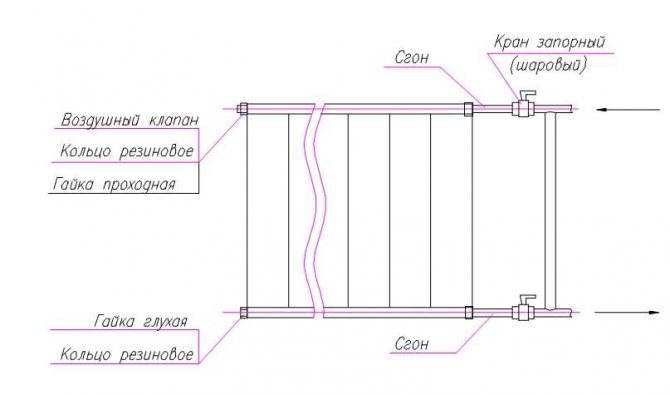

Installation sequence
Thermal heating radiator installation works include:
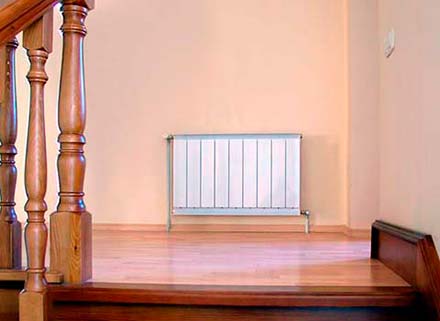

- Marking of the places for fixing the brackets. In this case, the overall dimensions are taken into account, the distance to the floor is at least 100–120 mm, to the window sill - at least 100 mm, to the wall 25–50 mm.
- Preparation of fasteners. It includes making holes in the wall Ø 10–12 mm, installing wooden or plastic plugs, fixing the bracket with screws Ø 6, at least 35 mm long.
- Hanging. The aluminum radiator TERMAL is fixed to the brackets vertically, providing a full and tight fit of the mounting holes on the hooks.
- Installation of an air valve on the upper manifold (for each end radiator).
It is forbidden to use silicone sealants containing acetic acid or others not recommended for use in contact with aluminum alloy. Do not allow the threaded holes to come into contact with the conduits containing copper.
DIY installation
Termal radiators are mounted in a slightly different way than their counterparts: they are not hung over the collector, like sectional products. The rear panel of the batteries is equipped with special holes for brackets: 2 at the bottom and 2 at the top. This must be taken into account when marking, adhering to a horizontal installation.
The installation procedure is as follows. The places where the brackets will be attached are marked on the wall.
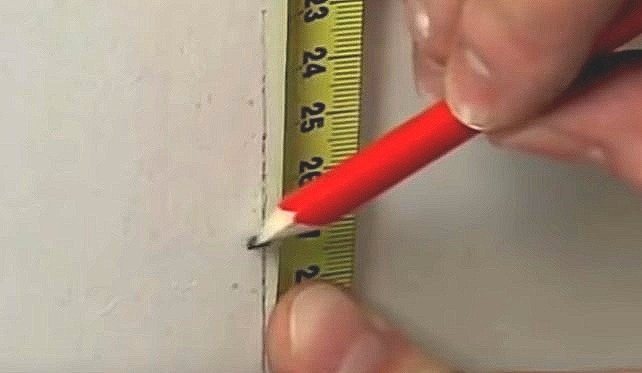

In these places, holes are drilled into which wooden plugs or dowels are inserted.


Brackets are attached.For this, screws with a length of 35 mm and a diameter of at least 6 mm are suitable.
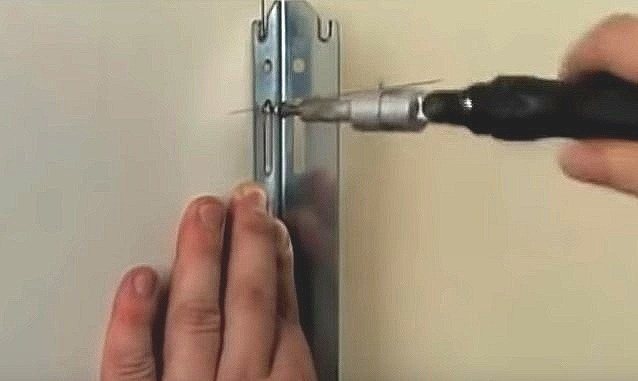

Holes are made in the protective film of the radiator in those places where the fasteners should be. The battery is suspended on brackets.
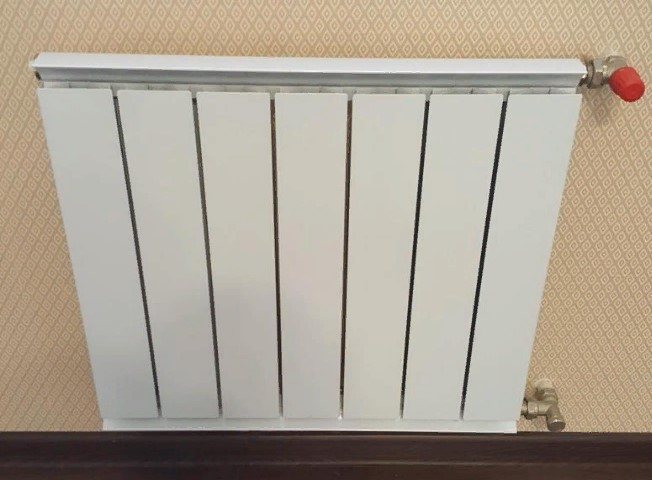

Shut-off, control valves, air vents, plugs, adapters are installed.
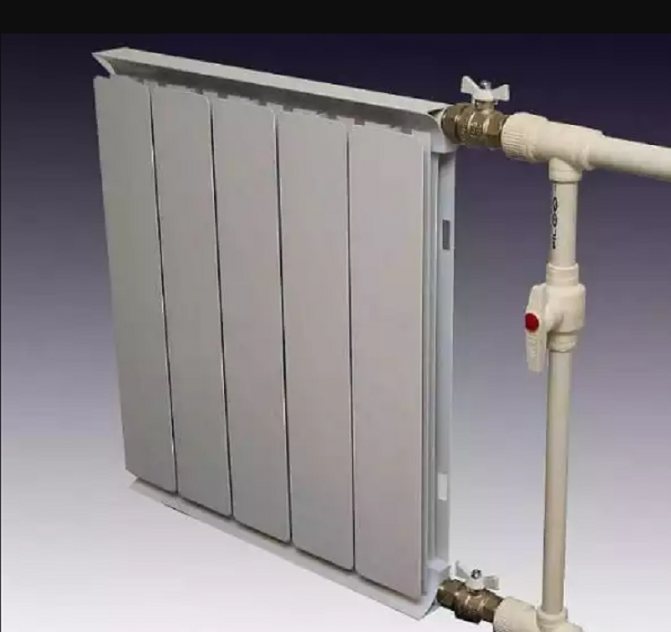

If the equipment is connected to a one-pipe system, then a bypass should be installed between the supply and return - a pipe one diameter smaller.
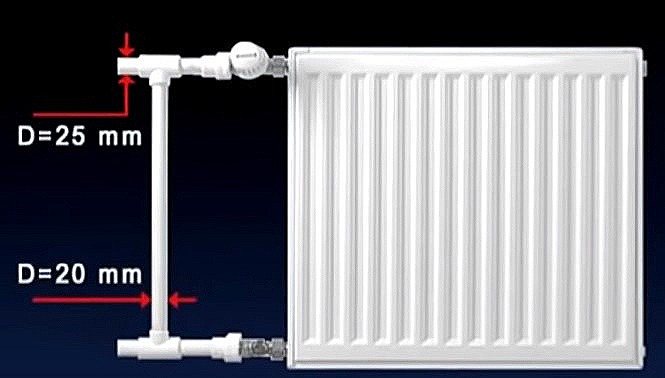

Maximum heat transfer is achieved if the supply pipe is connected from the top, and the return pipe is connected to the other side of the device from the bottom.
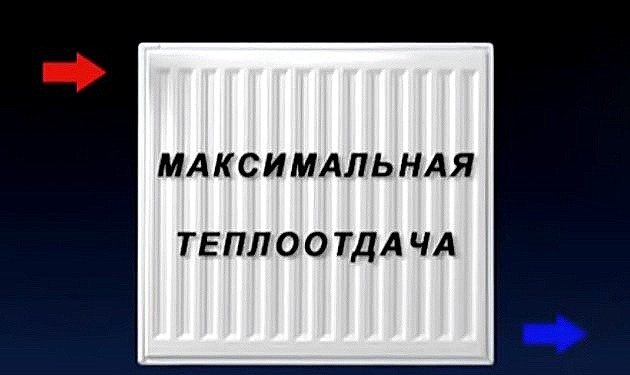

When installing with a lower connection, the supply pipe is installed in the branch pipe located closer to the middle of the radiator (red arrow).
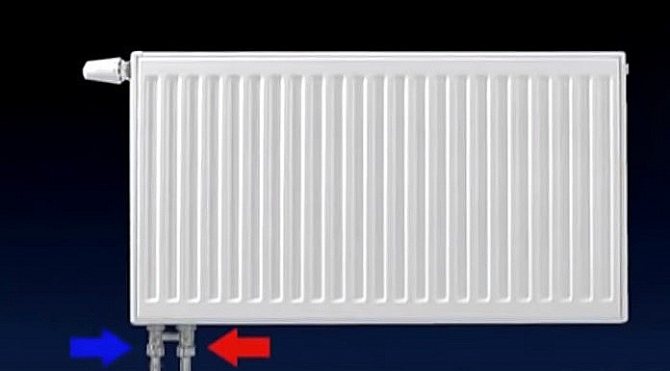

The connection can be side or bottom. Most often, the batteries are connected vertically.
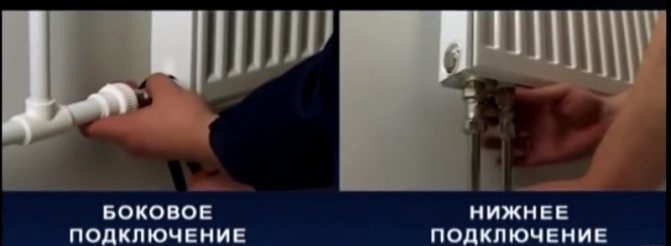

In order to maintain the product warranty, the installation of radiators should be entrusted to specialists who are licensed to perform the work.
The cost of "Thermal" radiators
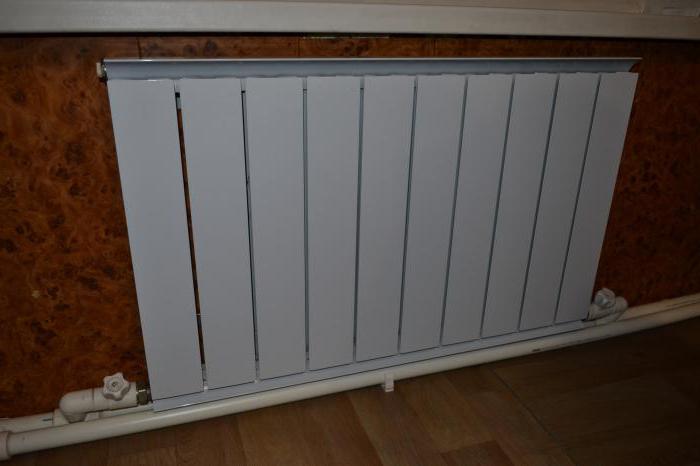

If you are interested in heating devices, then pay attention to such products of the enterprise as the radiator of the "Thermal" air conditioner. Reviews about it will be of interest to motorists, and not to those who are concerned about arranging a heating system in their home. So do not confuse these products. However, if you still belong to the first category, then you may be interested in the price of this spare part, which is 10,000 rubles.
Before purchasing heating radiators, you need to ask what their price and power are, since these indicators depend on each other. By purchasing a model of the RAP 300 series with three sections, you will become the owner of a device with a power of 0.315 kW. In this case, the price may vary from 990 to 1050 rubles. If the number of sections increases to 11, then the power will be 1.155 kW, and the price will vary from 3630 to 3840 rubles.
Even experts recommend reading reviews. The "Thermal" radiator is a product that consumers respond to very positively. After reading the opinions of buyers, you can understand that a battery consisting of 16 sections will have a capacity of 1.68 kW, while its price will vary from 5280 to 5590 rubles.
If you prefer models of radiators from the RAP 500 series, then their cost will be slightly different. For three sections, the power of the device is 0.483 kW, and the price will vary from 1050 to 1130 rubles. Eleven sections can cost the consumer 3850-4140 rubles, while the power will be 1,771 kW. The largest battery in terms of the number of sections will cost the consumer 5600 rubles. minimum, while the maximum price will be 6020 rubles. In this case, the power of the equipment will be equal to 2.576 kW.
Recommendations for use
Once again, it should be noted that Thermal radiators are produced non-separable, that is, they cannot be sorted out, otherwise it will lead to a breach of tightness. If the drain valve on the air vent is closed, do not completely shut off the supply line. It is also not recommended to leave the battery unfilled with coolant, in such conditions corrosive processes are activated.
You need to bleed air from the system 2-3 times a season. If there is an automatic air vent, no action is required.
So that the battery is not damaged during the pressure testing of the system in a multi-storey building, it is allowed to disconnect it for a while. Before this, the ball valves are closed and the air vent valve is unscrewed.
It is recommended to clean the outer surfaces of the radiator 2-3 times a season. For this, only soft materials and products are used that do not contain abrasive inclusions. Find out the stove with a hob by the link.
Features reviews
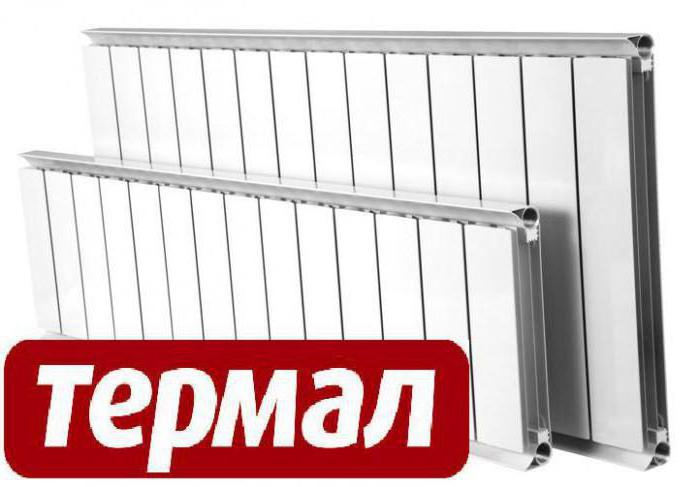

If you also decided to purchase Thermal aluminum radiators, you should definitely read the reviews about them.So you can find out that the symmetrical design acts as a plus of these devices. This distinguishes them from their foreign counterparts, due to which there are no technological pockets, and it is in them that pollution and gases accumulate. This feature, according to buyers, has a positive effect on performance.
The inner surfaces are smooth, which is why ideal conditions are created for the movement of the coolant. Almost no deposits form on the walls. According to buyers, these radiators work in systems with liquids with any alkalinity. The devices can be installed without removing them from the packaging, which prevents the possibility of damage during installation.
Thermal-500
| Name | Price with VAT for one piece. |
| Thermal Standard 500 - 4 sections | 1,560 |
| Thermal Standard 500 - 6 sections | 2,340 |
| Thermal Standard 500 - 8 sections | 3,120 |
| Thermal Standard 500 - 9 sections | 3,510 |
| Thermal Standard 500 - 10 sections | 3,900 |
| Thermal Standard 500 - 11 sections | 4,290 |
| Thermal Standard 500 - 12 sections | 4,680 |
| Thermal Standard 500 - 13 sections | 5,070 |
| Thermal Standard 500 - 14 sections | 5,460 |
| Thermal Standard 500 - 15 sections | 5,850 |
| Thermal Standard 500 - 16 sections | 6,240 |
| Universal kit for TERMAL radiator (4 brackets, 2 feet 3/4 ″ -1/2 ″, head 3/4 ″, Mayevsky valve 3/4 ″) | 270 |
Thermal-300
| Name | Price with VAT for one piece. |
| Thermal Standard 300 - 4 sections | 1,280 |
| Thermal Standard 300 - 6 sections | 1,920 |
| Thermal Standard 300 - 8 sections | 2,560 |
| Thermal Standard 300 - 9 sections | 2,880 |
| Thermal Standard 300 - 10 sections | 3,200 |
| Thermal Standard 300 - 11 sections | 3,520 |
| Thermal Standard 300 - 12 sections | 3,840 |
| Thermal Standard 300 - 13 sections | 4,160 |
| Thermal Standard 300 - 14 sections | 4,480 |
| Thermal Standard 300 - 15 sections | 4,800 |
| Thermal Standard 300 - 16 sections | 5,120 |
| Universal kit for TERMAL radiator (4 brackets, 2 feet 3/4 ″ -1/2 ″, head 3/4 ″, Mayevsky valve 3/4 ″) | 270 |

